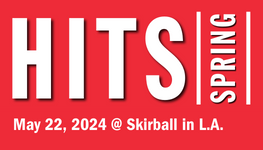Metadata

Experts: The Rewards and Frustrations of Metadata
Story Highlights
Having thorough metadata surrounding your content seems like a must nowadays. But hearing from Greg Smith, GM of ad services for Deluxe, making metadata actually work for your content sounds anything but simple.
It actually sounds pretty exhausting.
Everyone — studios, cable and satellite companies and other content providers — have different ways of delivering metadata, “and what happens is, when we have to shove that out to Netflix, iTunes, Amazon, AT&T, any one of our clients, they have their own requirements for metadata,” Smith said, speaking during a panel at the recent Metadata Madness East event in New York. “We have to take this disparate metadata, normalize it, and package it up for their specific use. It’s mind-numbing.”
He and other panelists tackled the key data elements that need to be considered and managed effectively to improve the consumer experience. And Smith pinpointed two of the ongoing problems facing content companies when it comes to metadata: few companies gather and disseminate metadata in the same way, and everyone is still working to stress the importance of making metadata a priority from the start of a production.
“It’s going to be impossible for us to manually manage all this metadata that we have to deal with, [and] we need some machine learning,” Smith said. “We have to start thinking upstream, when we’re creating that content, scene-level metadata for example. There are a lot of ways we can work to improve the metadata. And there are a lot of areas while [content] is playing that we can leverage metadata … .”
Alan Wolk, chairman of the 2nd Screen Society, underscored the importance of metadata when it comes to consumers and content discovery, sharing data on BitTorrent users that showed those who steal content often have subscriptions to services that offer that same content legitimately. “It’s just easier to get it off the torrent sites than it is to find it legally. And that shows where we are,” Wolk said.
Dave Perry, VP of future TV and cross-platform innovation for VH1, couldn’t agree more. He lamented that consumers are paying top dollar for cable and satellite services, and are still encountering serious challenges, not only finding specific shows, but also a specific channel.
“Ten clicks in, if I haven’t been able to find it, I’m going to move on to something else,” he said. “There’s a lot of good content to watch, and people have short attention spans. It needs to be more seamless. It’s annoyingly frustrating to [try to] find out where to watch the show you’re interested in.”
But this wasn’t an entirely negative discussion: Perry had a slam-dunk example of where data produced amazing results. For the fifth season of “Mob Wives” late last year, VH1 partnered with audio-recognition app company Shazam to create a synched second screen game experience, which worked with the live broadcast and post-broadcast digital offerings.
Because of the data coming from the experiment, VH1 discovered that more than half of the show’s viewers were time-shifters. VH1 in turn shifted its marketing and social engagement around the show, to accommodate how viewers watched the program.
“Those were eyeballs that were completely ignored,” Perry said. “Everyone always focuses on marketing and social engagement during live, but there are people who are willing to lean forward and engage during time-shifting. And those who engaged during time shifting engaged more [than those watching live].
“It’s not just about engaging live viewers anymore. It’s about engaging them whenever they’re watching television.”
Ian Schafer, founder and CEO of digital creative agency Deep Focus, spoke of the importance of metadata when it comes to advertising, and how quickly things change, not week to week, but hour to hour. His company now dedicates an entire crew to using viewer data to create and distribute ads in a timespan that was unheard of just a couple years ago.
“We look at data — [the data] freely available through social media channels, [and] also the metadata coming from regular programming channels — and we marry it with trend data,” he said. “And we’re using that to form the creative process. That’s something that’s become relatively new.”









